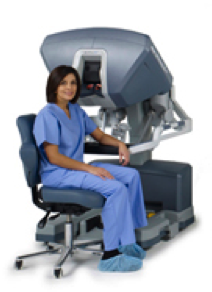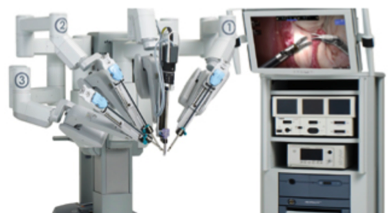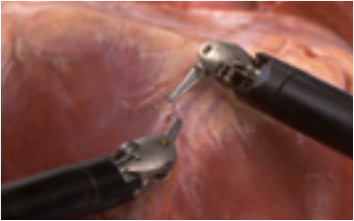OCT-Guided Surgery |
|||
|---|---|---|---|
|
Robotic surgical systems enable doctors to perform surgery in a manner never before experienced. With the surgeon sitting at a console a few feet from the patient, robotic systems translate the surgeon’s hand movements into corresponding micro-movements to instruments inside the patient’s body. Robotic surgical systems provide better visualization, dexterity, precision and control than open surgery while enabling the surgeon to perform procedures through tiny 1 to 2 cm incisions. These systems provide an unparalleled view into the patient’s body through 3D high-definition "vision" with natural depth perception and magnification for more accurate tissue identification.
With swept lasers, the potential of adding tactile feedback to surgical systems exists; and, in the longer term, the potential exists to integrate OCT to move from 2D to 3D visualization within the tissue. Additional general information: |
The surgeon's console. |
||
|
Robotic surgery is currently a reality. |
OCT can increase precision in surgery. |
||






